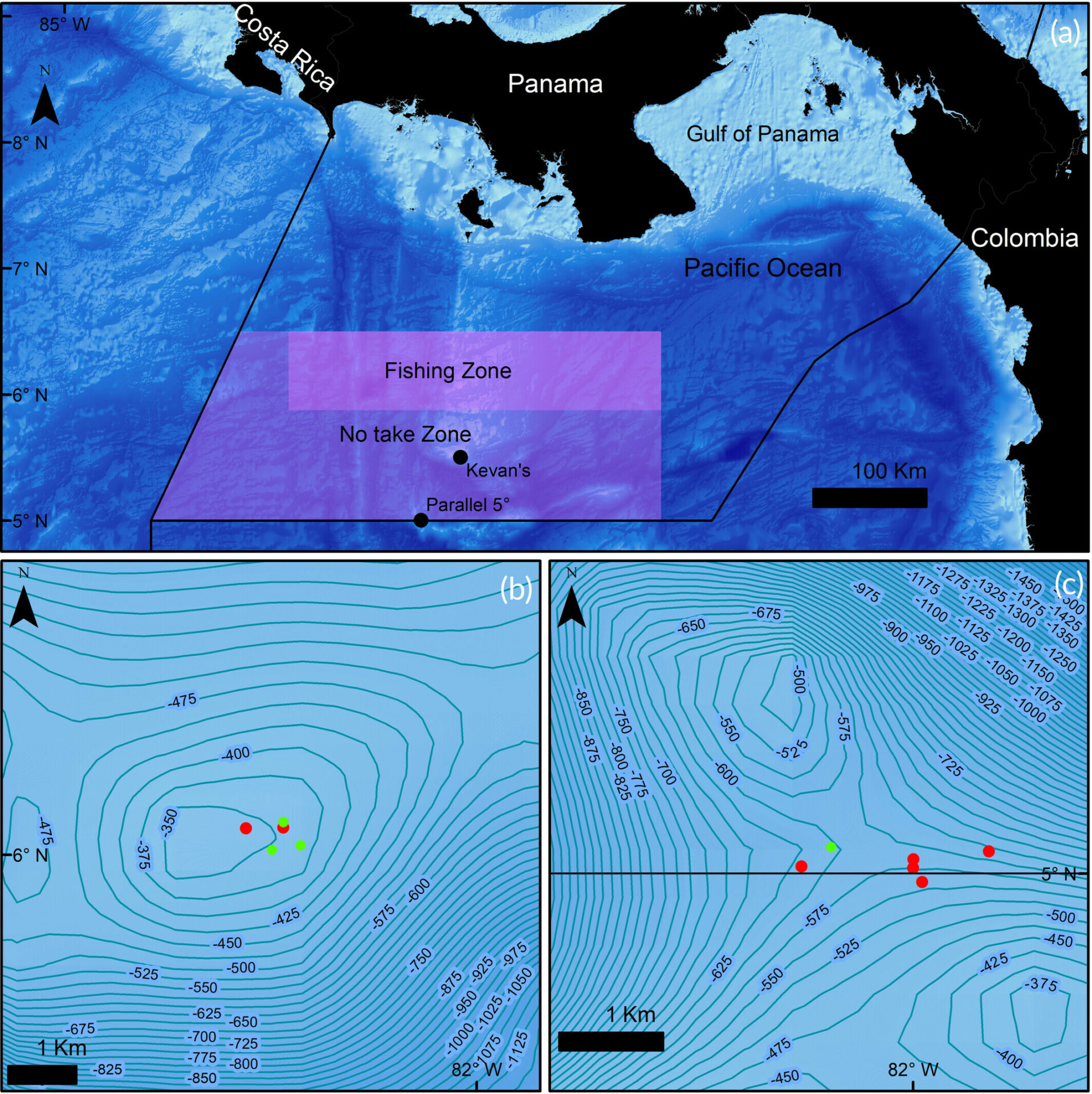Prickly sharks found aggregating on sea mounts in Panama’s eastern Pacific
The submarine landscape of Panama’s offshore Cordillera de Coiba Marine Protected Area is nothing short of extraordinary. Here, 24 sea mounts soar from the depths across nine marine mountain ranges, their pelagic peaks a stunning contrast to an abyssal trench that plunges to a depth of more than 4,700 metres (15,420 feet). Designated in 2015 and expanded in 2021, this marine protected area has advanced Panama’s protected area footprint to the 30% target outlined in the United Nations’ Convention on Biological Diversity (CBD) and the 30% by 2030 initiative endorsed by governments in the ‘Global Deal for Nature’. A new scientific paper celebrates an exciting find that sheds light on an International Union for Conservation of Nature (IUCN) Data Deficient shark species and confirms the importance of these mighty sea mounts in the eastern Pacific.

Location of the Cordillera de Coiba marine protected area in the exclusive economic zone (EEZ, black box) of Pacific Panama, bordering Costa Rica to the west and Colombia to the south, and showing the location of the two sea mountains: (b) Kevan Mantell and (c) Parallel 5° showing the border line with Colombia’s EEZ. The location of the 11 submersible dives is indicated: presence of prickly sharks (green circle) and absence (red). Photo © *Guzman et al. 2024
Twelve prickly sharks – a rare sight, and an entirely new one in Panama – were recorded at depths of between 151 and 350 metres (495 and 1,148 feet) during submarine dives on sea mounts in the Cordillera de Coiba Marine Protected Area. Not much is known about the global distribution of this species and it has been classified as Data Deficient by the IUCN. Previous sightings have tended to be of individuals, so records of groups of animals are particularly noteworthy. Documenting shark aggregations is vital for improving how we manage their populations and protect critical shark habitats effectively.
Two-thirds of the Cordillera de Coiba Marine Protected Area is strictly protected from fishing, mining and other extractive activities and the remaining third is open to sustainable use. Wedged as it is between Costa Rica and Colombia, it acts as a link in the Eastern Tropical Pacific, connecting migratory pathways for turtles, sharks, tuna and whales. More than 330 fish and 14 marine mammal species have been recorded in it so far, and a large number of these species are endemic (found nowhere else on earth) and endangered. Some illegal fishing still occurs, which makes it critical to increase support for effective monitoring and law enforcement. Data Deficient species are often assumed to be at risk of extinction by virtue of their rarity, so new records of such a species – like the prickly shark – help to highlight the importance of sea mounts (which are regarded as biodiversity hotspots) and motivate for special focus and enforcement at these critical sites.
Reference: *Hector M. Guzman, Candy K. Real, Stefanie Kaiser. 2024. First evidence of prickly shark, Echinorhinus cookei Pietschmann 1928, aggregation on seamounts in the eastern Pacific, Panama. Journal of Fish Biology. DOI: https://doi.org/10.1111/jfb.15720.
